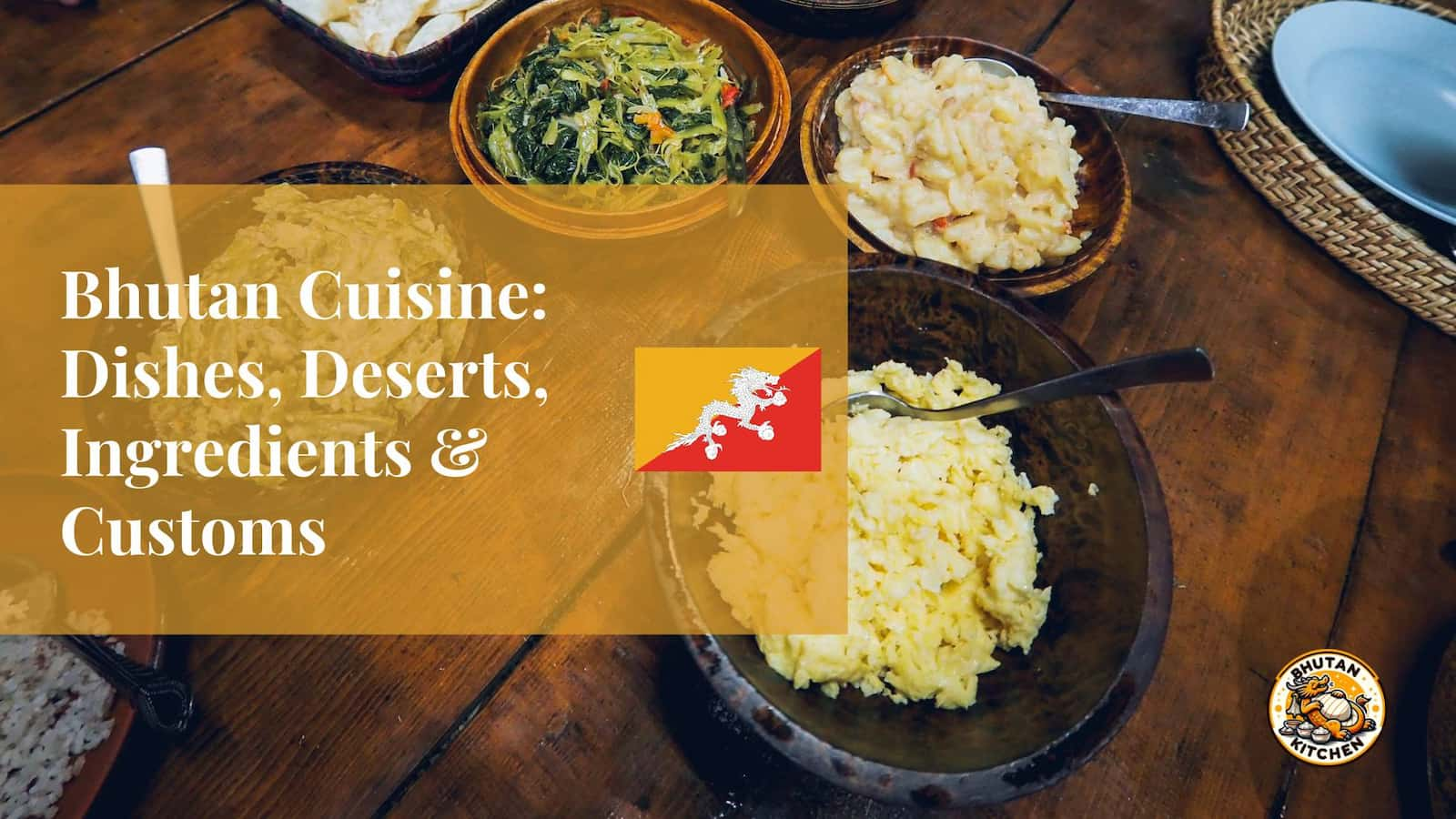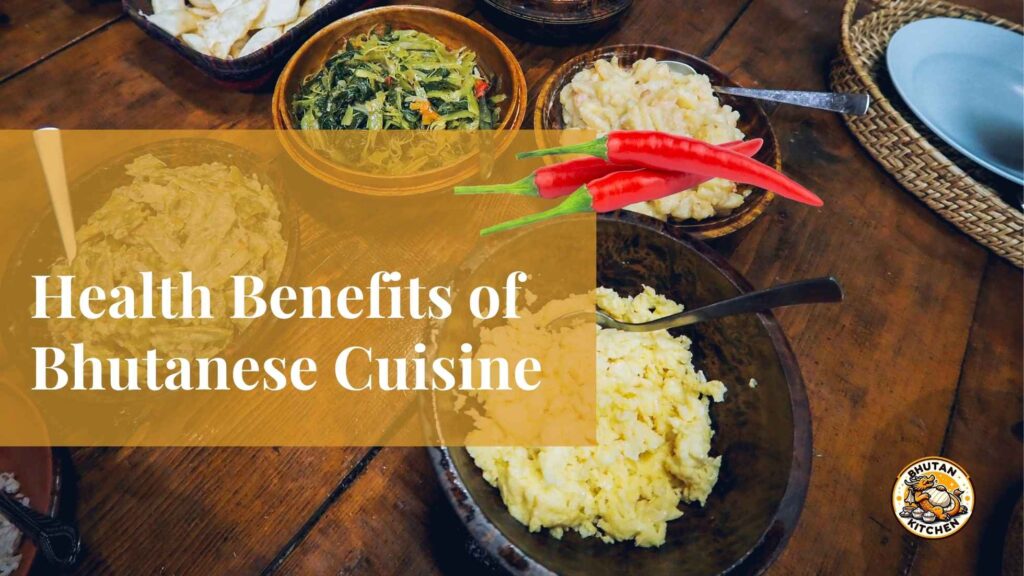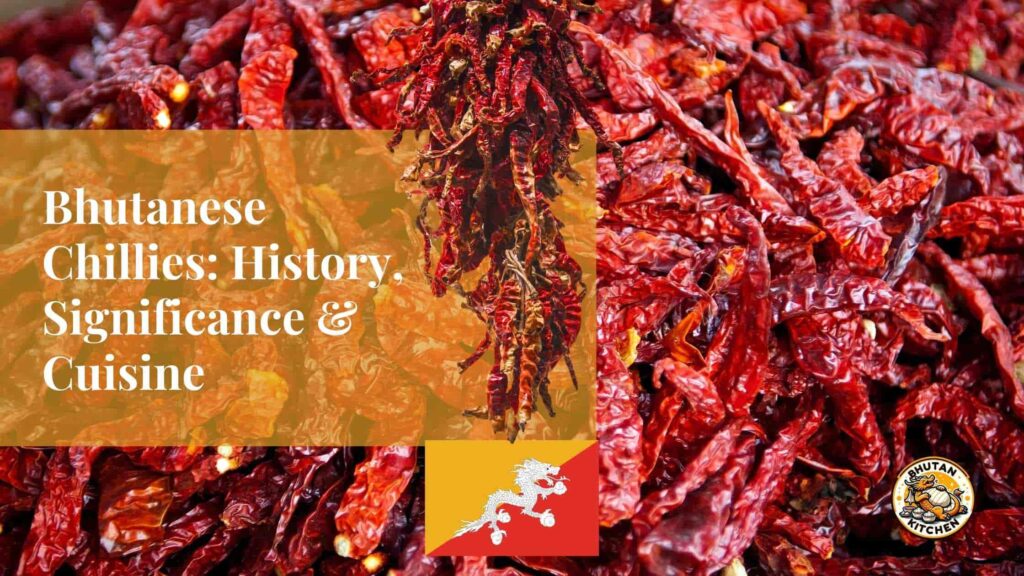Ema Datshi: The Flavorful Heart of Bhutanese Culinary Tradition
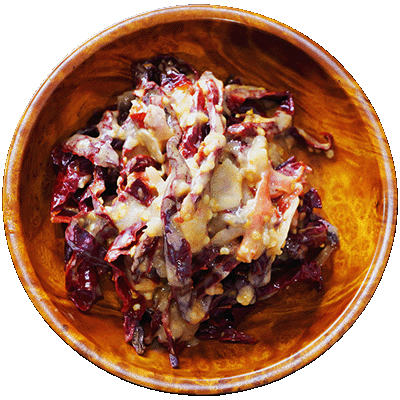
At the core of Bhutanese identity lies Ema Datshi, a dish so profound in its simplicity and yet so deep in its flavors that it transcends the boundaries of mere sustenance to shape a nation’s cuisine. Ema Datshi, which translates to “chili cheese”, stands as the national dish of Bhutan, a testament to the love affair that the Bhutanese have with spicy food. Comprising primarily of chili peppers and cheese, this delectable stew reflects the Bhutanese palate’s fondness for heat and the comforting richness of dairy. The robust chili peppers bring both the fiery punch and also act as vegetables, while the cheese, often homemade from cow’s or yak’s milk, brings a creamy, binding element to the dish.
Cooking Ema Datshi involves a delicate balance of stewing the chili peppers in a mixture of water, cheese, and a variety of other ingredients such as onions, garlic, and sometimes tomatoes. Each region in Bhutan lends its twist to Ema Datshi, altering its preparation through the use of different types of chilies, varying cheese textures, and additional local spices. From the smoky burn of dried red chilies to the fierce intensity of the green ones, every version of Ema Datshi promises an authentic taste of Bhutanese flavor.
Red Rice: The Essence of Bhutanese Sustenance
Red rice, grown in the mineral-rich soils of the Himalayan kingdom of Bhutan, holds a distinguished position for its nutritional content and cultural significance. This rice variety is a medium-grain rice which is known to be rich in fiber due to the partial milling that preserves the outer bran. The bran layer imparts a nutty flavor and a pale pink hue when cooked. Bhutanese red rice also contains essential amino acids, minerals such as iron and magnesium, and is a source of antioxidants. Its low glycemic index is beneficial for blood sugar regulation, making it a favorable option for those managing diabetes.
The preparation of red rice is a simple process: rinsing the grains and then cooking them with water, usually in a two-to-one water-to-rice ratio. The cooked rice is characteristically chewy with a slightly sticky texture, contrasting with the softer white varieties. In Bhutanese cuisine, red rice frequently accompanies dishes such as Ema Datshi, a spicy combination of chilies and cheese, and serves as the foundation for a myriad of meals from stir-fried vegetables to hearty meat stews.
When served, the rice often shares the plate with lean meats, fermented cheese, leafy greens, or daikon radish, showcasing its versatility. Red rice’s compatibility with strong flavors comes from its own inherent nuttiness, which balances the spice and depth of Bhutanese dishes. The use of this type of rice extends beyond the borders, now finding its place in global cuisine where it’s appreciated for its health benefits and unique taste profile. By incorporating Bhundi’s red rice, any meal can instantly gain a touch of Himalayan authenticity and nutritional completeness.
Jasha Maroo: Bhutan’s Spicy Chicken Sensation
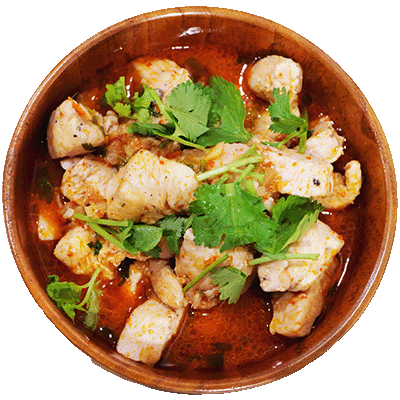
The traditional Bhutanese dish Jasha Maroo is a testament to the local love for layered flavors and spices. A spicy chicken stew, this dish incorporates a harmonious blend of Bhutanese spices and fresh ingredients. Relying on the distinctive flavors that hallmark Bhutanese cuisine, Jasha Maroo envelops the palate with heat and aroma that cater to those who appreciate zest in their meals.
A dive into this traditional spicy dish
With its roots entrenched in the fabric of Bhutanese culinary tradition, Jasha Maroo is a celebration of the nation’s bountiful produce and heritage. The dish is replete with chunks of chicken, commonly on the bone for added flavor, and is enriched by the elaborate use of local spices that not only raise its thermal profile but also infuse it with deep, complex characteristics.
Ingredients, especially the use of local spices
Key ingredients of Jasha Maroo include chicken, onions, garlic, tomatoes, and a significant amount of chili. Spices such as ginger, coriander, and turmeric play pivotal roles in imparting the dish with its signature zest and healthful benefits. Sichuan pepper, known locally as “thingye,” offers a unique tingling sensation, enhancing the dish’s overall spiciness.
Cooking process and serving suggestions
The preparation begins with sautéing the onions, garlic, and ginger until fragrant, post which pieces of chicken are seared to lock in their flavors. Tomatoes and a generous amount of sliced chili peppers are added once the chicken is browned. Simmering everything in water or broth allows the spices to meld into the chicken, resulting in tender meat and a robust broth. To complement Jasha Maroo, it is often served with red rice, unleashing a complementary nutritional profile and a slightly nutty flavor which balances the spiciness of the dish.
- Layer flavors by sautéing aromatics before adding the meat.
- Enhance taste and nutritional value by incorporating a variety of spices.
- Achieve balance by pairing the dish with mild-flavored red rice.
The Warming Comfort of Phaksha Paa (Pork with Red Chilies)
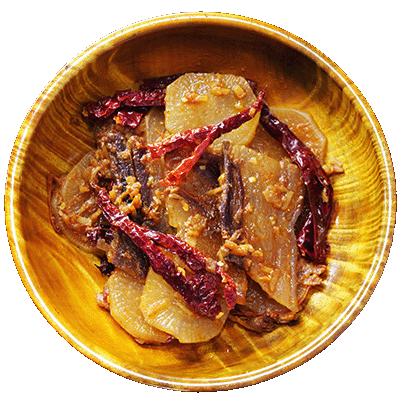
Bhutanese cuisine celebrates pork through the delectable dish known as Phaksha Paa, a testament to the meat’s popularity in the region. Featuring succulent slices of pork bathed in a rich, spicy gravy, the dish is lovingly cooked with Bhutanese red chilies, which are revered not just for their heat but also for their distinct flavor profile. These chilies contribute a vibrant red hue and a depth of taste that is unlike any other.
Preparing Phaksha Paa begins by stir-frying the pork with a mix of aromatic ingredients such as ginger, garlic, and sometimes Sichuan pepper. Then, the pivotal Bhutanese red chilies are added to the pan, either fresh or dried, along with a generous helping of radishes or other seasonal vegetables. The dish often simmers until the pork is tender and infused with the flavors.
- Radishes add a pleasant crunch and a slightly sweet counterpoint to the heat of the chilies,
- mountain-grown herbs introduce an earthy essence,
- while a final dollop of farmer’s cheese balances the dish with its creamy texture.
Phaksha Paa doesn’t stand alone on the dining table. A steaming bowl of red rice is the usual accompaniment, soaking up the spicy sauce and completing the meal. Eating this dish is not just about nourishment but also about experiencing the warmth that it brings, radiating comfort from the inside out, especially during the chilly mountain evenings. Additional sides may include fermented vegetables, adding a tangy note to the feast, or the ever-present Ema Datshi for a double hit of chili goodness. Whether shared among family or offered to guests, Phaksha Paa is a culinary representation of Bhutanese hospitality.
Savor the Twirl of Taste: Discovering Momos in Bhutan
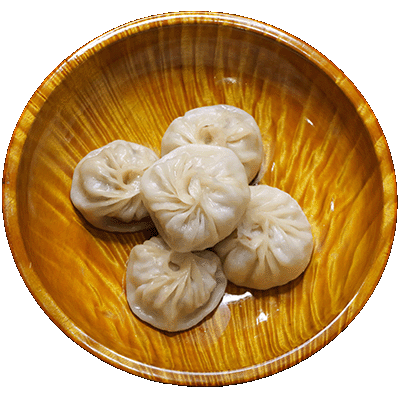
Dumplings known as momos form an integral part of Bhassistantlicasnese culture. These delectable pockets encase a variety of fillings, exhibiting a confluence of savory flavors. Professional chefs and home cooks make momos with precision, turning simple ingredients into a feast for the senses.
The Cultural Significance of Momos in Bhutan
In Bhutan, momos are not just a snack; they stand as a symbol of festivity and togethernational agriculture pragmaticshirt. Originating from Tibetan influences, their popularity has soared, becoming a staple at gatherings and a beloved treat among tourists and locals alike.
Fillings, Wrapping, and Cooking Methods
The typical momo is a masterpiece of culinary craftsmanship. Ground meat, often beef, chicken, or pork, is seasoned with onions, garlic, and a blend of Bhutanese spices before being cocooned in a thin layer of dough. Vegetable variants are abundant, with cabbage, cheese, and spinach frequently taking center stage. Once wrapped, these dumplings are either steamed to perfection or fried for a crispy exterior.
Dipping Sauces and Condiments
The pleasure of eating momos is heightened by a plunge into a pool of sauce. The traditional accompaniment, a zesty tomato chutney, ignites the palate with its tangy and spicy undertone. Chili sauce and other homemade condiments may also grace the table, offering a personalized flavor voyage.
- Steamed momos present a soft, pillowy texture that contrasts exquisitely with the robustness of the filling.
- Fried momos captivate with their golden, crunchy shells, shielding the succulent interior.
- Seasonal ingredients often dictate the filling varieties, showcasing the local harvest in these delightful bites.
Enthusiasts affirm, the experience of the momo extends beyond taste, embodying a slice of Bhutan’s heart and soul.
A Dive into Vegetarian Bhutanese Cuisine: Zow Shungo
Zow Shungo, a wholesome vegetarian dish, features a melange of seasonal vegetables paired with Bhutan’s staple, rice. This meal encapsulates nutrition alongside Bhutanese culinary simplicity. Including an array of vegetables such as spinach, mushrooms, potatoes, and tomatoes, Zow Shungo provides essential vitamins, fiber, and minerals, conducive to a nutritious diet. Often, the rice is leftover, which is then fried to perfection with dairy butter or oil, with diced vegetables introduced creating a harmonious infusion of natural flavors.
The preparation of Zow Shungo presents assured ease. Rice forms the base of the dish, to which vegetables are added. These ingredients are sautéed together, allowing the flavors to blend seamlessly. Fresh green chilies may be introduced for those who appreciate a spike of heat in their meals. Local Bhutanese cheese, known for its creaminess, can be melted into the mixture for an indulgent twist.
Recipes and Regional Variations
Zow Shungo emerges in plethora variations, with regional produce dictating the vegetables incorporated. In colder regions, one might find sturdier greens, while in more temperate zones, a greater variety of vegetables are used. Some renditions garner distinct twists from the addition of fermented yak cheese or a dollop of spicy Ema Datshi on the side. Celebrations and everyday meals alike, Zow Shungo graces tables. Often, it is served as a side dish, with its comforting warmth making it especially revered during Bhutan’s colder months.
Through its vibrant ingredients and nurturing warmth, Zong Shungo represents not just vegetarian cuisine, but the spirit of Bhutanese culture that treasures resourcefulness and an intimate connection with the land.
Liquid Nourishment: Suja (Bhutanese Butter Tea)
Suja, or Bhutanese butter tea, serves as more than just a beverage—it is a symbol of hospitality and a staple in the daily lives of Bhutanese people. Brewed with unique ingredients, Suja offers warmth in the cold Himalayan climate. For those who have savored its distinct taste, Suja is not merely a drink but a profound cultural experience.
Introduction to Suja and its Place in Bhutanese Culture
In the high altitudes of Bhutan, accessibility to rich, calorific sustenance is necessary for energy. Suja, with its blend of tea, butter, and salt, delivers this while embodying the ethos of Bhutanese hospitality. As travellers disembark in the land of the Thunder Dragon, a cup of Suja is frequently the first gesture of welcome they encounter.
Ingredients, Including the Quintessential Butter
Traditionally, Suja includes Pemagul black tea, churned yak butter, and salt. Yak butter is prized for its density of nutrients and the distinctive, slightly tangy flavor it imparts to the tea.
Brewing Techniques and Tasting Notes
Preparation of Suja involves boiling Pemagul black tea for several hours. The tea is then poured over churned yak butter and salt in a special container, where it is churned or blended until it assumes a creamy consistency. Expert brewers often comment that the perfect cup of Suja should possess a balance between the sharpness of the tea, the richness of the butter, and the savory touch of salt. The resulting brew is a frothy, thick liquid that delivers a rich mouthfeel, savory umami flavors, and a hint of creaminess, presenting a stark contrast to western teas.
Savoring the Richness: Yak Meat Dishes
In the highlands of Bhutan, yak meat is more than sustenance; it is a storied component of the region’s culinary identity. With the animals thriving in the high-altitude climate, their meat lends distinct flavors to Bhutanese cuisine. Rich in protein and essential fats, yak meat forms the foundation of numerous dishes celebrated across the country.
Among the popular dishes, Yaksha maroo, a spicy stir-fry, showcases yak meat’s robust texture, often enhanced with local spices and herbs. In Bhutanese festivals such as Losar, yak meat takes center stage. Prepared in a variety of ways from boiled to dried and spiced, these dishes serve to honor guests and commemorate the festivities.
Residents prepare yak meat using traditional methods that have transcended generations. A common preparation method involves drying thin strips of meat, which is then either consumed as is or cooked with a mixture of vegetables and spices to create hearty stews. The unique preparation techniques contribute to the meat’s signature taste and are integral to the authenticity of Bhutanese food culture.
- The significance of yak meat in highland cuisine is rooted in both the animal’s adaptability to the harsh climates and its nutritional value for the communities.
- Dishes derived from yak meat are multifaceted, ranging from suculent stews to dried meat snacks, each a testament to Bhutan’s resourcefulness and culinary heritage.
- During celebratory times, yak meat symbolizes hospitality and abundance, playing an indispensable role in Bhutanese social and cultural expressions.
Discovering Thukpa – A Bhutanese Delight
What is Thukpa?
Thukpa, a warming noodle soup, has etched its place in the heart of Bhutanese cuisine. Originally from the eastern part of Tibet, Thukpa has traversed the Himalayas and evolved with a distinct Bhutanese flair. A steal-the-show dish during cold seasons, it’s the epitome of comfort food in Bhutan.
The Rich Flavors of Thukpa
Intricately seasoned with local spices and herbs, Thukpa is a perfect blend of aromatic flavors that represent the cultural tapestry of Bhutan. It is typically prepared with hand-pulled wheat noodles, hearty vegetables, and either beef, chicken, or sometimes yak meat, bathed in a savory broth. Vegetarian versions are also popular and just as satisfying.
Savoring the Dish
Thukpa is more than just a meal; it’s an experience. To enjoy Thukpa in true Bhutanese style, one should embrace the harmony of its ingredients and the warmth it brings from within. It’s often enjoyed with family and friends, especially during festive occasions or on chilled days when its nourishing broth provides the ultimate solace.
Thukpa’s Cultural Significance
Thukpa is ingrained in Bhutan’s food traditions and reflects the country’s generous hospitality. Offering Thukpa to guests is a common gesture of welcome, signifying care and sharing the nation’s gastronomic heritage. It is a humble yet profound representation of Bhutan’s approach to life – simplicity blended with richness.
An Acquired Taste: Goep (Tripe)
Goep, a traditional component of Bhutanese cuisine, consists of strips of tripe which typically originate from the stomach lining of cattle. In Bhutan, this dish reflects the resourceful use of all animal parts, adhering to a philosophy of minimal waste. The preparation of goep involves thorough cleaning and simmering until tender, followed by stir-frying with seasonings such as Sichuan peppers, garlic, and Bhutanese red chilies, creating a distinctive flavor profile that integrates both spiciness and a subtle earthiness.
In Bhutan, tripe is often served with staples like red rice or buckwheat pancakes, contributing to a balanced meal that resonates with the strong and hearty flavors common in the local cuisine. While tripe may be an uncommon element in the diet of many outside Bhutan, its presence on the Bhutanese plate is a testament to the nation’s culinary ingenuity and its cultural embrace of diverse textures and tastes.
A Homely Delight: Kewa Datshi (Potato and Cheese)
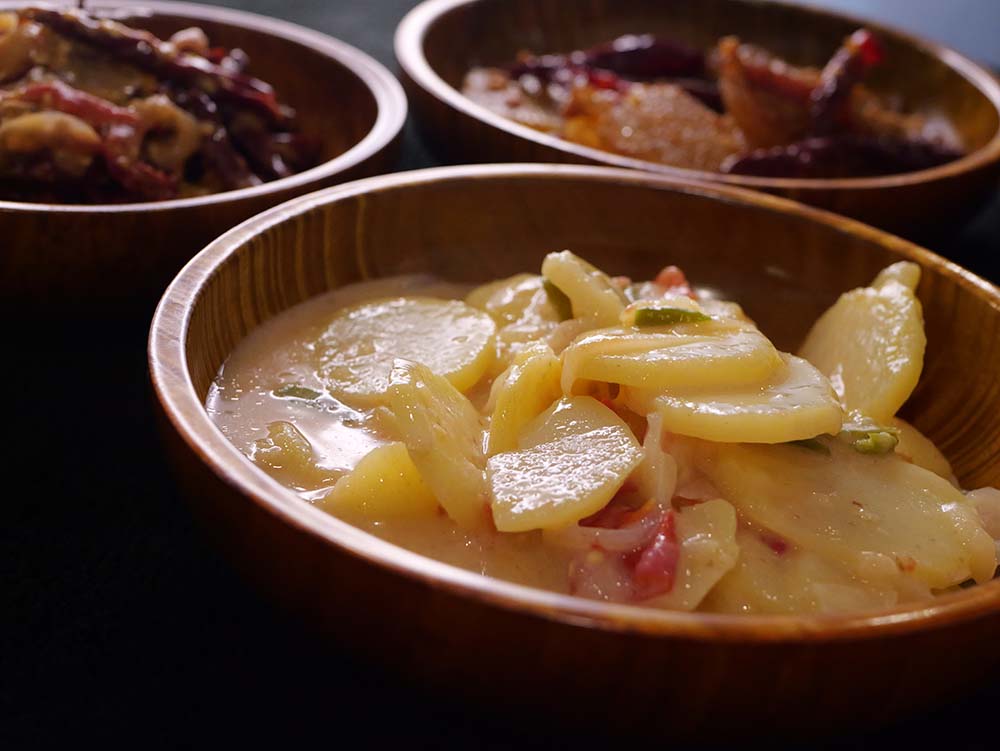
Kewa Datshi forms the epitome of Bhutanese comfort food, combining the simplicity of potatoes with the rich, creamy texture of cheese. A dish deeply woven into the fabric of Bhutanese family life, Kewa Datshi provides a heartwarming experience for anyone who savors its homely charm. This dish doesn’t just satiate hunger but also offers a slice of Bhutanese culture, shared across generations.
The cooking process for Kewa Datshi begins with thinly sliced potatoes. These slices are simmered with Bhutanese cheese, known as Datshi, garlic, and chilies for heat. Butter may be added for richness, along with a modest amount of water to create a stew-like consistency. The key ingredients unite to form a dish that manages to be both intensely flavorful and soothing.
Serving Kewa Datshi the Bhutanese way involves a generous portion accompanied by a pile of red rice, this staple grain’s nutty flavors complementing the creamy potatoes perfectly. Other accompaniments might include crisp, fresh buckwheat pancakes or steamed whole wheat tingmo, offering a blend of textures. The result is a nourishing meal that invites one to partake in the joy of simple, yet profound, culinary traditions.
Diversity in Grains: Buckwheat Pancakes and Noodles
In Bhutan, buckwheat serves as a cornerstone crop, adapting effortlessly to the high altitudes and cooler weather of the Himalayas. Beyond merely tolerating the challenging climate, buckwheat thrives, essential to both the agricultural sphere and the dietary staples of the Bhutanese people. Buckwheat comes to life in a variety of traditional dishes, two of which hold a special place in Bhutanese cuisine: buckwheat pancakes and noodles.
Buckwheat pancakes, known locally as ‘kule’, are a beloved breakfast dish, serving not just as a comforting meal to start the day but also as a cultural emblem. In contrast, buckwheat noodles, or ‘puta’, emerge as a versatile dish frequently graced with spicy flavors and enjoyed throughout the day. Both dishes converge in their preparation, demanding a process of grinding the buckwheat into flour, a method deeply rooted in Bhutanese culinary traditions.
These grains, pivotal in the sustenance of Bhutanese families, particularly in the colder, mountainous regions, are more than mere sustenance; they offer a glimpse into the country’s rich tapestry of culinary practices and cultural narratives. Whether savored in the serene morning hours or as a hearty meal amidst the day’s activities, buckwheat pancakes and noodles represent the adaptability and diversity inherent in Bhutan cuisine.
- The role of buckwheat in Bhutanese agriculture reflects its ability to flourish in the less forgiving terrains and climates of the region.
- Traditional dishes made from buckwatch, notably pancakes and noodles, are integral to the Bhutanese diet and hold significant cultural relevance.
- Preparation techniques for these dishes are steeped in tradition and symbolize the harmonious relationship between Bhutanese people and their environment.
A Taste of the Mountains: Bhutanese Highland Cuisine
Bhutanese highland cuisine emerges from the harsh, mountainous regions where the thin air and cold climate dictate a diet that warms and sustains. These conditions lead to a cuisine rich in dairy, meat, and fortifying grains, such as barley. Agriculture at high altitudes yields fewer vegetable varieties, consequently integrating elements like wild herbs and high-altitude crops into meals.
Specialty dishes reflect the environment, with ingredients that can weather the cool climate. Yak meat is prevalent, favored for its high fat content and its ability to provide the necessary calories in a cold environment. Hardy root vegetables also make a frequent appearance, while barley is the grain of choice, turned into hearty porridge or robust pancakes.
In the Bhutanese highlands, cheese derived from yak’s milk, known as “chugo,” is not just a delicacy but a staple, adding a rich, tangy flavor to a variety of dishes. A traditional highland meal might include “Thukpa,” a warming noodle soup often made with yak meat, alongside “Tsampa,” roasted barley flour that is a versatile ingredient in the highlander’s diet.
- Barley pancakes are customary and provide a dense, nutritious meal, often accompanied by yak butter or cheese.”
- “Jasha Tshoem,” a curry made with chicken and flavored with local herbs like Sichuan pepper, embodies the fusion of flavors from the available produce and imported spices.
- The challenge of growing a diverse range of vegetables at high altitudes leads to dishes that feature foraged greens and tubers, which are often pickled or dried for year-round use.
The result is a robust cuisine that carries the essence of the mountains, infusing every dish with the resilience and spirit of Bhutan’s highland communities.
Embracing Nature: Seasonal and Organic Ingredients
Bhutanese cuisine harmonizes intimately with the seasons, relying on fresh, organic ingredients that flourish in local conditions. Each dish emerges from an understanding of what the environment yields throughout the year; thus, ingredients are often at their peak of freshness, taste, and nutritional value. Bhutan’s farming methods abstain from synthetic pesticides and fertilizers, fostering a landscape where cuisines are not only a reflection of culture but also of the country’s commitment to sustainability.
Organic farming underpins the availability of ingredients such as chilies for Ema Datshi, the national dish, and the diverse varieties of mushrooms that thrive in Bhutanese forests. The practice of organic farming has profound implications on the flavor profile and nutritional content of these ingredients. For example, red rice, central to the Bhutanese palate, infuses dishes with a nutty flavor and high mineral content as it’s grown free from artificial enhancements.
Subtle shifts in nature’s cycles dictate which ingredients chefs introduce into their stews, dumplings, and noodles. For instance, spring might highlight fresh greens and crisp radishes, while autumn showcases hearty squashes and apples. By embracing the natural rhythm of the seasons, Bhunanese cuisine delivers an ever-changing, vibrant gastronomic experience that invites diners to connect with the environment with every bite.
The Spice of Life: Bhutanese Condiments and Spices
Spices and condiments are the elements that give Bhutanese cuisine its distinctive character. An array of indigenous spices and condiments permeates every dish, balancing heat with a rich tapestry of flavors. Sichuan pepper, known locally as “thingye,” creates a tingling numbness, a foundational aspect of many local recipes. Equally integral is the Bhutanese red chili, which provides not just the spiciness craved in the national dish ema datshi, but also a depth of flavor relished across the country.
Garlic and ginger form an indispensable duo in Bhutanese kitchens, often working in concert to lay the flavor groundwork for stews and marinades. Cardamom is another staple, contributing an aromatic sweetness to both savory and sweet dishes. Turmeric, with its vibrant hue and earthy notes, is frequently used to impart color and a subtle layer of flavor, often in conjunction with other spices.
Bhutanese condiments often incorporate these spices in unique blends, resulting in complex flavor profiles that define the nation’s culinary identity. Ezay, a fiery condiment made with fresh chilies, garlic, oil, and other spices, can be found accompanying almost any meal. It complements everything from rice dishes to momos, offering an immediate hit of heat and flavor. Another favored condiment is “jemar”, a sauce made with pounded walnuts and spices, renowned for its rich texture and nutty taste.
- Ezay (spicy chili condiment)
- Thingye (Sichuan pepper)
- Bhutanese red chilies
- Garlic
- Ginger
- Cardamom
- Turmeric
- Jemar (walnut sauce)
Dive deeper into the world of Bhutanese flavors. Reflect on how the blend of these spices and condiments goes beyond mere taste, weaving into the fabric of Bhutan’s culture and daily life. From the tingling sensation of thingye to the bold kick of red chilies, every spice contributes a verse to the flavorful song that is Bhutanese cuisine.
A Toast to Tradition: Ara (Traditional Alcoholic Beverage)
Ara, a distilled alcohol, resonates deeply with Bhutanese tradition. Brewed from rice, maize, millet, or wheat, Ara is not merely a drink but a gesture of hospitality and a symbol of Bhutanese generosity. Unlike commercial beverages, Ara anchors itself in the fabric of local lifestyle, integral to ceremonies and social gatherings.
Producing Ara is akin to an art form, demanding meticulous craftsmanship. The process, demarcated by fermentation and subsequent distillation, requires ample patience and a precise blend of indigenous ingredients. Each batch embodies the essence of its maker’s technique, making every sip a tribute to its local roots. Typically imbibed during festivals, religious events, and intimate family celebrations, Ara forges communal ties.
- During Losar, the Bhutanese New Year, Ara often flows freely, uniting friends and family.
- In rural areas, farmers may partake in Ara after a long day, celebrating the completion of arduous agricultural work.
- At weddings, Ara becomes a quintessential component, signifying joy and prosperity for the newlyweds.
Exploring Vegetarian and Vegan Delights in Bhutanese Cuisine
Bhutan, a nation with a strong tradition of Buddhism, inherently offers a variety of vegetarian options in its cuisine. Vegan and vegetarian visitors discover that Bhutanese meals commonly feature an abundance of vegetables, as the country’s agriculture is predominantly organic, dictated by the government’s commitment to maintaining a sustainable environment. Menus frequently include dishes such as zow shungo, which is a stir-fry of seasonal vegetables often served with red rice, and kewa datshi, where potatoes are cooked in a cheesy sauce yet can be customized to exclude cheese for a vegan option.
Restaurants cater to dietary preferences by substituting dairy and meat with plant-based ingredients. A traditional ema datshi, known for its combination of chili and cheese, can be transformed with nut-based cheeses or omitted completely, yielding a spicy yet vegan-friendly dish. Plant-based alternatives for butter and milk in suja, the distinctive Bhutanese butter tea, are becoming more accessible, resulting in a seamless transition to vegan preferences while preserving the authenticity of the experience.
- Buckwheat pancakes are a common dish which can be enjoyed without any modifications.
- Even momos, the beloved dumplings, are often stuffed with cabbage, cheese, or other vegetables, and can be made without animal products upon request.
Travelers with plant-based diets engage directly with Bhutan’s profound respect for all sentient beings, finding that their dietary needs align harmoniously with the country’s spiritual practices. Bhutanese chefs are accustomed to personalizing dishes to suit the individual needs of their guests, ensuring that those who abstain from animal products due to ethical, health, or environmental reasons can still partake in the country’s rich culinary heritage.
Culinary Crossroads: Influence of Tibetan, Indian, and Chinese Cuisines
Bhutan’s strategic location in the Eastern Himalayas positions it as a nexus where culinary traditions from neighboring countries converge. Tibetan, Indian, and Chinese influences interweave with indigenous practices to create a distinct Bhutanese cuisine. Historical migrations, trade routes, and religious exchanges have facilitated a rich culinary dialogue among these regions.
Bhutanese dishes often borrow elements from Tibetan cuisine, notably through the incorporation of dairy products and the staple grains like barley. A simple yet staple Tibetan dish that has made its mark in Bhutan is the momo, a type of dumpling filled with either meat or vegetables, echoing Bhutan’s own love for dumplings.
India’s influence manifests robustly in Bhutan’s liberal use of spices and legumes. The country’s penchant for fiery flavors can be attributed to the cross-pollination of Indian culinary techniques, with dishes such as Jasha Maroo vibrating with the warmth of ginger, garlic, and chilies.
Chinese culinary practices surface in Bhutanese cuisine through techniques such as stir-frying and the use of certain condiments. Noodles, which are prevalent in various forms in Chinese cooking, appear in Bhutan as putka or bja zha, which are stir-fried or incorporated into soups respectively.
- Trade and religious pilgrimages between Bhutan and Tibet popularized the use of yak meat and butter, essential ingredients in both cultures.
- Cross-border influences with India introduced cooking techniques such as fermenting and drying, along with the famous Assam tea, a foundation for the Bhutanese butter tea, Suja.
- As diplomatic and trade relationships grew with China, the exchange of goods like mushrooms and silken tofu enriched Bhutan’s culinary scene.
This blend of cultures crafts a cuisine that is as varied as the landscapes of Bhutan itself. On one plate, a diner might find the silkiness of a Chinese-inspired noodle dish coupled with the vibrant heat of Indian spices, brought into harmony by the earthy, nomadic touch of Tibetan influence.
Dining Like a Local: Traditional Bhutanese Eating Customs
Bhutanese dining customs reflect the communal and hospitable spirit of this Himalayan kingdom. Visitors are often struck by the simplicity and the convivial atmosphere that pervade mealtime gatherings. Meals serve as an opportunity not just for nourishment, but also for social engagement. Diners commonly sit cross-legged on the floor, grouped around low tables, a physical expression of the meal’s communal nature.
When a meal begins, tradition dictates offering a short prayer of thanks; a small morsel is placed atop a wooden bowl as an offering. This practice underscores the Bhutanese respect for all sentient beings and the blessings of nature that provide the meal. Eating usually commences with a gesture from the oldest member or the host to signal that everyone may begin. Dishes arrive in a particular sequence, often starting with a serving of rice, which is viewed as the cornerstone of each meal, with accompanying dishes shared from common bowls instead of individual plates.
Families typically share food from these communal dishes with each member adding condiments to their own taste. Guests are expected to accept food when offered, as refusing may be interpreted as disrespectful. However, one may simply touch the food to one’s forehead if too full to eat more, showing respect for the gesture. During the meal, conversations are light-hearted and filled with laughter, enhancing the communal dining experience. The shared pot of butter tea, or suja, is continuously refilled throughout the meal, symbolizing warmth and hospitality.
Silverware is uncommon save for serving spoons; food is traditionally enjoyed with the hands, adding to the tactile experience of eating and reflecting an intimate connection with one’s meal. One should always use the right hand when eating or passing food as a sign of respect and cleanliness. After the meal, leftover food is not wasted; it is saved for later or given to animals, underscoring the Bhutanese commitment to environmental conservation and economic prudence.
- Diners often sit on the floor as a communal practice, reinforcing mealtime as a social gathering.
- A gesture of prayer before eating highlights gratitude and respect for nature.
- The host initiates the meal, symbolizing hospitality and the start of the communal experience.
- Guests should accept food when offered, with a touch to the forehead to acknowledge the gesture if unable to eat more.
- Butter tea is a staple at the table and represents a shared connection among diners.
- Using the right hand for eating and passing food is a sign of respect and an integral part of Bhutanese dining etiquette.
- Food conservation practices after meals reflect socio-environmental values of the Bhutanese culture.
Celebratory Feasts: Festival Foods in Bhutan
During festivals in Bhutan, food transcends its routine purpose of nourishment, becoming an embodiment of celebration and cultural expression. Festivals are times when the communities gather, and the feasting showcases the rich tapestry of Bhutanese traditions through an array of special dishes.
Significance of Food in Bhutanese Festivals
Festivals in Bhutan are vibrant affairs with elaborate rituals and performances, and the food served is a cornerstone of the festivities. Dishes prepared during these times are often richer and more elaborate than those served on a typical day, symbolizing the generosity and joy of the occasion. The act of sharing food among family and guests reinforces social bonds and reflects the communal spirit of Bhutanese culture.
Examples of Festival-Specific Dishes
Dishes like Jasha Maru and Phaksha Paa, which are already integral to Bhutanese cuisine, are prepared with particular flair for festivals. However, certain items are specifically associated with these gala events:
- Jomolah: A rich stew often reserved for special occasions, featuring various meats including beef, pork, and sometimes chicken, simmered with a range of mountain herbs and spices.
- Putka: Fried sweets made from buckwheat or wheat flour, akin to mini doughnuts, often enjoyed during Losar, the Bhutanese New Year.
- Hapai Hantue: A unique stuffed dumpling filled with a mixture of turnip leaves, amaranth, cottage cheese, and butter, which is a common feature during the winter festival of Lomba among the Haa Valley communities.
- Hoentoe: Buckwheat dumplings filled with a mix of turnip greens, cheese, and butter, a speciality of the Haa Valley commonly prepared for Lomba.
Each dish prepared during Bhutanese festivals is not just a feast for the palate but is steeped in symbolism and history, offering insights into the rich cultural fabric of this Himalayan nation. Engaging in these feasts offers an opportunity to experience Bhutanese life at its most celebratory and to partake in traditions that have been passed down through generations.
Sweet Endings: Bhutanese Desserts and Sweets
Bhutanese desserts, although not as widely recognized as other aspects of its cuisine, offer a delightful experience reflective of its cultural heritage. These sweets, often featuring indigenous ingredients, bring a gentle close to the vibrant and spicy meals typical to the region.
Popular Sweets and Their Cultural Context
Bhutanese sweet dishes often incorporate rice, dairy, and local fruits. One such traditional dessert is zamik, a sweet rice dish that usually accompanies religious ceremonies and special occasions. Prepared with saffron and butter, Zamik’s unique preparation process underscores the Bhutanese emphasis on community and celebration.
Another example is the Bhutanese sweet buckwheat pancake, which diversifies the range of desserts available in Bhutan using buckwheat, a staple grain in the region. Often enjoyed with honey or homemade fruit syrups, these pancakes aren’t just a breakfast item but also a sweet treat savored during festive moments.
Fruit-based sweets are ample due to the diverse climatic zones of Bhutan, which allow for a variety of fruits to flourish. Khabze, a traditional sweet, deep-fried pastry, is a common snack served during festivals and family gatherings, indicative of Bhutan’s rich tradition of communal eating and celebration.
While information on the large scale adoption of Bhutanese desserts is limited, the available offerings reveal a confectionary facet deeply entwined with cultural practices and local ingredients. These sweet dishes provide a nuanced perspective into the nation’s culinary and societal norms, allowing insight into how Bhutan preserves its heritage through the medium of flavor and fellowship.
Embark on a Culinary Journey through Bhutan
Bhutanese cuisine offers a distinctive palate of flavors, reflecting the nation’s rich cultural tapestry and reliance on vibrant organic produce. Seasoned with native spices and chilies, each dish creates a symphony of tastes that exemplifies the essence of Bhutan. From the iconic Ema Datshi to the subtle complexities of Red Rice, Bhutan’s gastronomy not only satisfies the palate but also offers a lens into the country’s soul. Dishes such as Jasha Maroo and Phaksha Paa stand as testaments to Bhutan’s culinary tradition, while Momos represent a universal love for hearty, hand-crafted delicacies.
Food aficionados will find Bhutan’s traditional flavors an unforgettable experience, with vegetarian delights and rich, butter-infused beverages adding to the country’s unique dining repertoire. The inclusion of Yak meat specialties, the depth of Bhutanese highland dishes, and the crucial role of traditional condiments further add layers to the country’s food profile. Moreover, the influence of neighboring cuisines enriches Bhutanese recipes, introducing diversity while maintaining a distinct Bhutanese character.
Traditional cooking practices in Bhutan are more than a mere means of sustenance; they are a celebration of heritage and community. Festival foods, for instance, offer an insight into the nation’s festivities and the communal aspect of Bhanian culture. Similarly, the preparation of Ara and the meticulous creation of local sweets and desserts underscore the critical relationship between cuisine and cultural expression.
Have you tasted the unique flavors of Bhutan? Share your culinary travel stories and join the conversation about Bhutan’s gastronomic journey.
For those eager to experiment with the rich flavors of Bhutan you can contact Bhutan Kitchen for a delightful meal delivered to your door, view our menu here.

